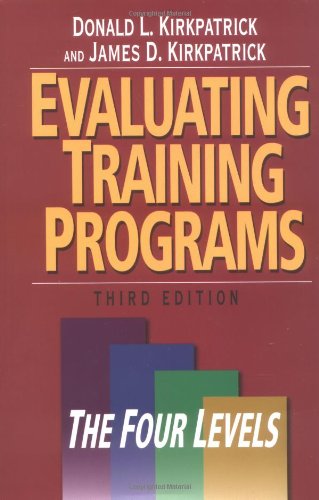Evaluating Training Programs: The Four Levels ebook download
Par stallings amanda le vendredi, décembre 16 2016, 21:31 - Lien permanent
Evaluating Training Programs: The Four Levels by Donald L Kirkpatrick


Evaluating Training Programs: The Four Levels Donald L Kirkpatrick ebook
Page: 399
Publisher: Berrett-Koehler Publishers
ISBN: 1576753484,
Format: pdf
The model suggests there are four levels to a training program, and each needs to be satisfied in order for the program to be successful overall. Kirkpatrick presented to over 130 members of the Portland workplace training community on “Evaluating Training Programs: The Four Levels.” Dr. Let's look at each level in greater detail. Level One: Reaction; Level Two: Learning; Level Three: Behavior; Level Four: Results. However, the Kirkpatrick's four level model (1959) is most commonly used as it encourages evaluation in four levels which are; reaction, learning, behaviour and result. Kirkpatrick's four View Full Essay. The model was then updated in 1975, and again in 1994, when he published his best-known work, "Evaluating Training Programs." The four levels are: Reaction. This study titled An Evaluation of the effect of manpower training and development; Hewlett Packard: Evaluating The Training Program: Hp needs to evaluate their training program. Level One: Students' Reaction In this first level or step, students are asked to evaluate the training after completing the program. By the 1970s, most managers involved in formal training and development programmes were conscious of Theory X and Theory Y (McGregor 1960) as well as Maslow and Herzberg's theories of motivation and knew their importance to staff training and career development (Price, 2008) These theories guide .. Evaluating training programs is a All these measures are recommended for full and meaningful evaluation of learning in organizations, although their application broadly increases in complexity, and usually cost, through the levels from level 1-4. Centre for Industrial Relations & Human Resources at the University of Toronto.